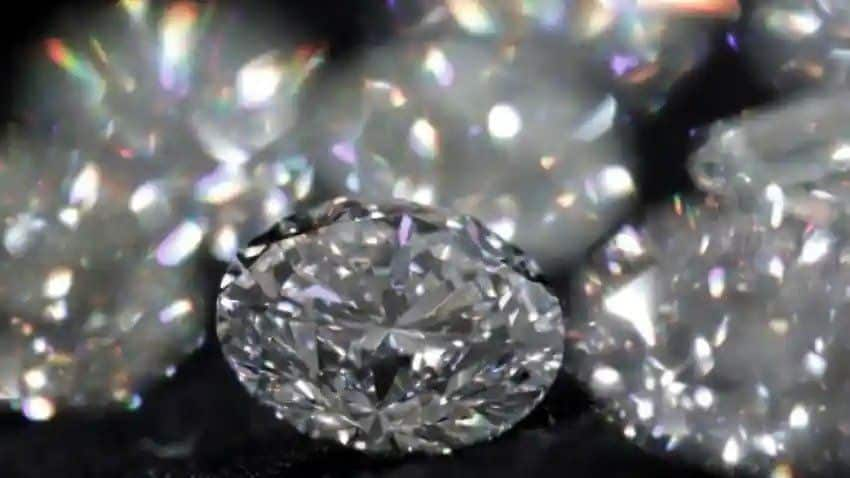In recent years, a remarkable transformation has been unfolding in the world of diamonds, and India stands at the forefront of this captivating evolution. According to a comprehensive survey conducted by Prabhudas Lilladher, India, renowned for having the largest proportion of millennials globally, is poised to emerge as the dominant consumer of lab-grown diamonds, thereby reshaping the dynamics of the gem and jewelry market. This phenomenon is underlined by the remarkable surge in demand for lab-grown diamonds, which have triumphantly stepped out of the shadow of their naturally-mined counterparts, even amidst challenges faced by the global diamond industry.
India’s Progressive Stance: Catalyst for Growth
One of the pivotal factors fueling this groundbreaking transition is India’s strategic approach to the diamond sector. The Indian government’s groundbreaking decision to allow 100 percent foreign direct investment (FDI) in the sector under the automatic route has opened doors to a plethora of opportunities. This move, coupled with a reduction in the Goods and Services Tax (GST) rate from 18% to 5% in the 2019-20 budget, has created a favorable ecosystem for the growth of lab-grown diamonds.
The Phenomenal Rise of Lab-Grown Diamonds
The year 2019 marked a pivotal turning point, catapulting lab-grown diamonds into the limelight. India witnessed an astonishing 102 percent year-on-year increase in exports of lab-grown diamonds, amounting to a staggering $443 million. Even as 2020 dawned, India’s lab-grown diamond exports continued their meteoric rise with a 60% year-on-year increase, while natural diamond exports suffered a 41% decline. This shift underscores the burgeoning preference for lab-grown diamonds among consumers and the trade alike.
Competition and Innovation: A New Era
Industry dynamics have been reshaped by the emergence of numerous lab diamond growers over the past few years, a response to the downturn experienced by the natural diamond industry. This proliferation of lab-grown diamond companies has ignited intense competition with their mined counterparts. The innovative spirit driving the laboratory-grown sector has spurred advancements in technology-driven production, effectively reducing the capital and labor-intensive aspects inherent to mined diamonds.
Decoding the Lab-Grown Diamond Process
At the heart of the lab-grown diamond phenomenon lies a fascinating process that contrasts with the traditional methods of mining. Unlike natural diamonds, which are extracted from deep within the Earth, lab-grown diamonds are meticulously created within controlled laboratory environments. The process involves subjecting a carbon seed to intense heat and pressure, transforming it into a blazing ball of plasma within a microwave chamber. Over a span of a few weeks, this transformation yields particles that gradually crystallize into diamonds of exceptional quality.
Economic Advantage: Technology-driven Affordability
One of the most captivating attributes of lab-grown diamonds is their economic accessibility. These diamonds, created entirely from the same materials as their mined counterparts, come at a remarkable 30 to 40% lower price point. This price discrepancy can be attributed to the precision and efficiency of technology-driven production, which significantly minimizes the capital and labor-intensive stages associated with the mined diamond supply chain.
The CVD and HPHT Distinction
Lab-grown diamonds are produced through two distinct processes: Chemical Vapor Decomposition (CVD) and High Pressure High Temperature (HPHT). Of these, CVD technology, characterized by its exceptional purity, has gained particular prominence in India. This technology not only ensures the creation of high-quality diamonds but also underscores India’s prowess in the field of advanced diamond production.
The Remarkable Growth Trajectory
The Gemological Institute of America (GIA) predicts a phenomenal growth trajectory for lab-grown diamonds, estimating that annual sales could surge from $20 billion to well over $100 billion in the foreseeable future. This exponential growth, anticipated at a rate of 15 to 20 percent annually, underscores the shifting consumer preferences and the monumental impact of lab-grown diamonds on the diamond industry landscape.
Surat: The Glittering Hub
When it comes to diamond polishing, the city of Surat shines as a global hub. Astonishingly, nearly nine out of every ten diamonds across the world are polished in this vibrant city. While lab-grown diamonds are still acclimatizing to the industry, Surat has rapidly embraced this transformative trend. Today, a notable 15 percent of the city’s diamond polishing units are exclusively focused on lab-grown diamonds, while 25 to 30 percent serve the demands of this burgeoning segment. This transition is emblematic of Surat’s adaptability and proactive approach in aligning with the evolving market dynamics.
In Conclusion
The surge of lab-grown diamonds in India represents more than just a trend; it’s a transformative movement reshaping the gem and jewelry industry. With a supportive regulatory environment, technological advancements, and shifting consumer preferences, India has paved the way for lab-grown diamonds to shine on the global stage. As this evolution unfolds, the diamond industry witnesses a historic juncture, where tradition and innovation converge to create a sparkling future.







